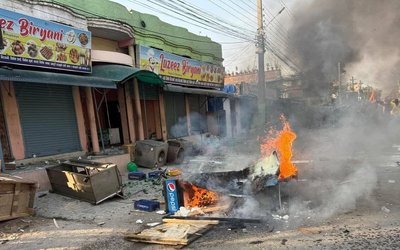More on News





Adolescent girls drop out of school at a faster rate than boys despite the fact that they are more likely to receive stipend support, according to a new UNICEF survey.
While boys are more likely to say they quit school because of lack of interest, for girls the reasons for drop out are a mix of factors including responsibility of household chores, lack of funds, menstruation, etc.
Conducted in collaboration with the Population Council, Center for Research on Environment, Health and Population Activities (CREHPA) and Yuwalaya, the survey covered 15 districts in the Terai and Mid and Far Western regions of Nepal. (Achham, Baitadi, Bajhang, Bajura, Dhanusha, Dolpa, Doti, Humla, Jumla, Kalikot, Mahottari, Mugu, Parsa, Rautahat, and Saptari).
In addition to education of the adolescents, the comprehensive survey also encompasses other major aspects of holistic adolescent development, including health, livelihood, environment, gender equity and participation of the 10-19 year olds in the region.
The findings of the survey were disseminated today at an event attended by officials from the government, UNICEF, UNFPA, national development organizations, civil society representatives and journalists.
“This will not only be helpful for the National Planning Commission in rolling out the National Plan of Action on Adolescents, but will also be helpful for other sectoral ministries, “said Dr. Bimala Rai Paudyal, Honorable Member, NPC. The National Plan of Action on the holistic adolescent development has a 10-year vision of an empowered and competent new generation for a better Nepal.
The survey also provides important insight on the attitudes of adolescents towards marriage and violence. For example 60 percent of adolescents believe that a boy can say no to an arranged marriage while only 46 percent believe that a girl can. Similarly, 46 percent of
adolescent boys agreed that women should tolerate violence in order to keep harmony in the family compared to 42 percent adolescent girls.
The survey was designed with a large household sample of 3000 adolescents - 1,366 boys and 1,634 girls. In addition to the baseline survey, qualitative research on adolescents was also conducted through 12 participatory group exercises and discussions in three districts.
Some of the major issues raised by adolescent girls during the participatory group discussions included sexual harassment, gender-based discrimination and harmful practices such as chaupadi, early marriage, untouchability, etc. while boys talked about alcoholism and drug abuse. At the event, Dr. Will Parks, UNICEF Deputy Representative, highlighted the importance of the survey.
“The findings of the baseline survey will help us understand the areas and issues that require our attentions to achieve results for and with adolescents for making a real difference in Nepal,” he said.





